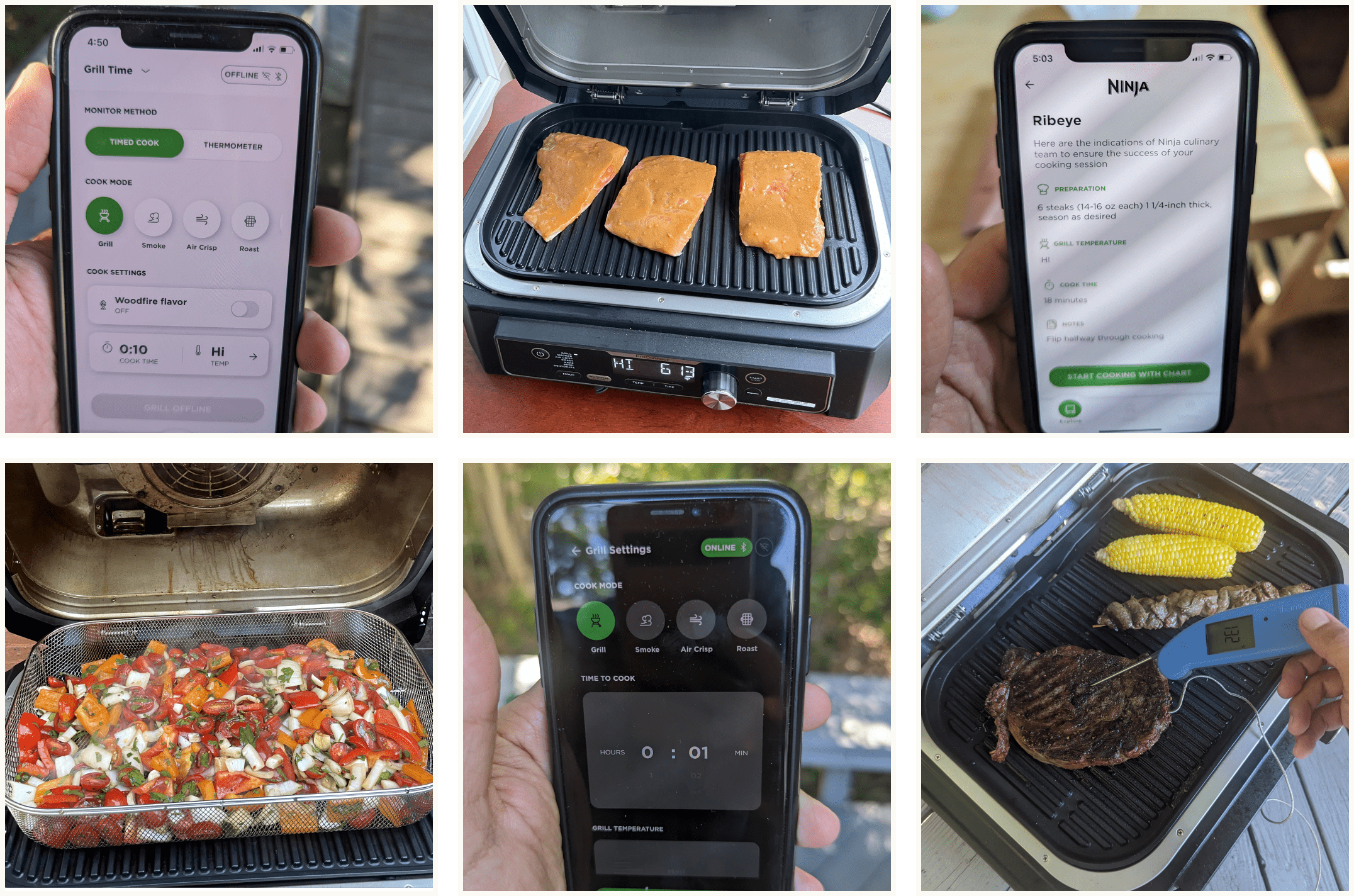Product Evaluation of a Connected App & Grill Experience Drives UX Feature Improvements
Ninja is known for versatile, easy-to-use appliances from blenders to air fryers to outdoor grills, that make preparing delicious meals attainable and enjoyable for home chefs of any skill level.
Ninja was about to launch a new-to-market connected outdoor grill that would allow users to control their grill remotely with their companion app, Ninja Pro Connect. After working with the Ninja team to define the app vision and experience strategy, we worked with them to conduct a product evaluation to evaluate the designed app experience and identify feature & UX enhancements before the grill went to market.
Project Type
- Consumer Tech
- Connected Digital Products
Project Date
- 2023

Getting started
Balancing Control and Convenience with an App-Connected Grill
Grilling outdoors is a delicious way to prepare food, but not always easy to achieve when you’re new to grilling, trying new techniques, or having other dishes to prepare simultaneously.
The Ninja connected grilling experience was designed to give home chefs more freedom and confidence to walk away from their grill, cook their food to their specific tastes, and expand their cooking skills.
The challenge was creating a seamless experience between the grill and app that balanced giving users guidance and reducing the effort required to grill while providing them their preferred level of control over the cooking process.

Comprehensive Testing
Evaluating the Connected App & Grill User Experience
We immersed ourselves in cooking with the grill and test version of the app by preparing multiple meals using the various capabilities (grill, smoke, air fry) as well as preparing different types of food (chicken, fish, steak, vegetables) to cover a range of cooking scenarios.
We documented each cooking instance with screenshots of the app UI, photos of the grill, and our notes on the experience using the app in tandem with the grill across each step of cooking a meal.
Our focus was on the overall user experience of how the app supported and enhanced using the grill in onboarding and learning the appliance, preparing the grill and food to be cooked, and cooking the meal.

Aligning the experience
Uncovering Insights & Opportunities for App & Grill Integration
In aggregating our takeaways, we saw how the app provided multiple paths into cooking with insight into what was happening in the grill and thoughtful nudges to help users grill confidently. However, some features and flows presented gaps in the user experience that either required guesswork or trial and error to use.
Through the audit, we identified key opportunities to reduce the learning curve of the product system in order to ensure users have a successful first-time experience and get the most value out of the features right out of the box.
We evaluated the findings against the defined experience principles, outlining where the app either supported or fell short of the intended experience. The result was a comprehensive evaluation of the end-to-end experience, revealing both highlights and moments of friction between the app, grill, and the user.
The evaluation included recommendations to make the next iteration of the app a more cohesive user experience, opportunity areas to evolve the app over time, and usability flags to explore through further user research.

Charting The Path Forward
Collaborative Visioning and Actionable Insights for the Future of the Connected App & Grill
Collaboratively with the Ninja team, we held a visioning workshop to explore the goals for the user experience and map critical components of the ideal user journey across the connected system cooking experience.
Using the team’s focus areas from the workshop, we synthesized the evaluation recommendations into prioritized opportunities to pursue now, next, and in the future.
Having the outside perspective of the expert evaluation confirmed some of the team’s hypotheses around existing points of UX friction and surfaced new understanding and opportunities to improve the end-to-end experience.
The outcome was team clarity and direction on the most impactful adjustments, updates, and explorations to pursue to make the connected app an indispensable tool for an intuitive grilling experience.


